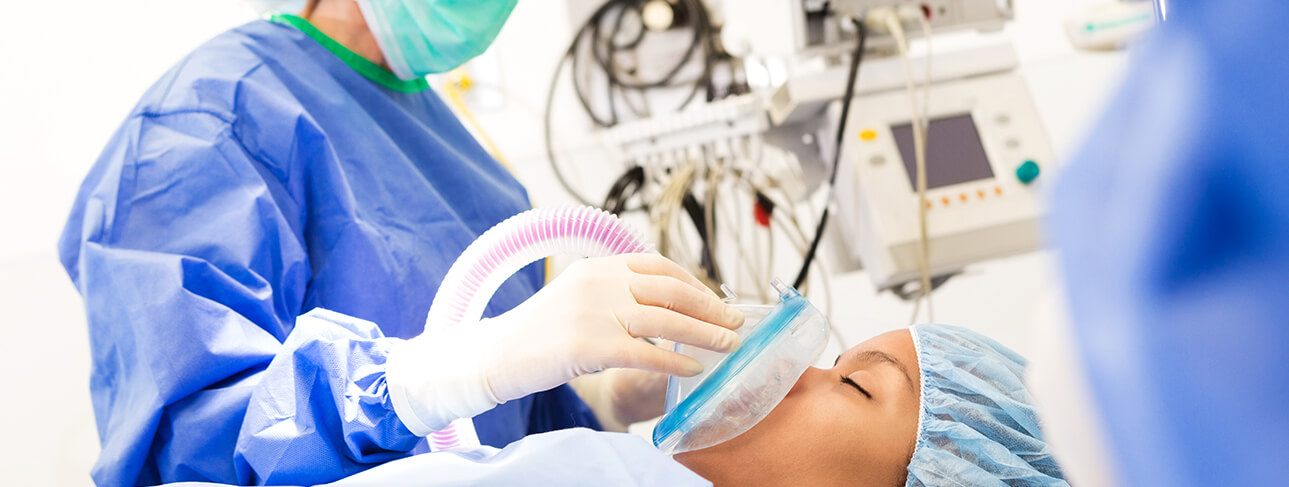
At Athens Oral Surgery Center – You’re In Good Hands
Athens Oral Surgery Center has been accredited by the Georgia Society of Oral and Maxillofacial Surgery and American Association of Oral and Maxillofacial Surgery. All the staff members are also certified in various levels of emergency and life support techniques, including: basic life support (BLS/CPR), pediatric advanced life support (PALS), advanced cardiac life support (ACLS), and advanced trauma life support (ATLS).
During your consultation, Dr. Tomlinson will discuss the anesthesia options appropriate to your treatment and answer any questions you may have.
About Anesthesia
Important to any procedure in the field of oral surgery is pain control or anesthesia. Anesthesia is used to treat pain (analgesia), reduce anxiety (anxiolysis), and prevent memory of a traumatic procedure (amnesia). Many procedures may be done with a variety of anesthesia types, while other procedures are best done with a specific type. Often, techniques are combined since one type of anesthesia will not treat all aspects. This will be discussed during your consultation visit with Dr. Tomlinson.
Three Forms of Anesthesia:
- Local anesthesia
- Nitrous oxide: inhalation anesthesia and anxiolysis (to reduce anxiety)
- Intravenous (IV) sedation or general anesthesia
Local Anesthesia
Local anesthesia is the standard for pain control in every procedure. An example of local anesthesia is novocaine; however, novocaine has been replaced in mainstream practice with other similar, more modern medications such as lidocaine, bupivacaine, and carbocaine. Local anesthetics are given by injection into the area where the procedure will be performed.
Local normally takes anywhere from 3-6 minutes to achieve effect, blocking the body’s ability to sense any pain in that area. It is often adequate for minor procedures, though many patients prefer a higher level of anesthesia for most oral surgery procedures. Local anesthesia is normally used in conjunction with stronger anesthesia such as nitrous oxide or IV sedation.
Nitrous Oxide
Nitrous oxide, or laughing gas, has a long history of successful use in the fields of dentistry and oral surgery. Nitrous oxide is a colorless, pleasant-smelling gas that you inhale. The primary purpose for using nitrous oxide is anxiety reduction (anxiolysis).
Advantages To Using Nitrous Oxide:
- Safe and readily administered in the outpatient office setting
- Effective at anxiety reduction in a rapid manner, normally taking effect in under 5 minutes
- Wears off quickly, allowing for complete recovery from its effects within 5-10 minutes after you stop inhaling the gas
- Patients do not require a driving escort for the procedure
While nitrous oxide is very effective in reducing anxiety, it does not provide deeper levels of anesthesia, such as those achieved through IV sedation and general anesthesia modes. Nitrous oxide by its nature cannot put people to “sleep” (general anesthesia); therefore, it is a very effective technique when used in combination with local anesthesia to keep the patient calm and comfortable during a procedure.
Intravenous (IV) Sedation / General Anesthesia
The highest level offered in the office setting is IV sedation or general anesthesia. This technique uses an IV to give the medication that is meant to eliminate feeling of pain, reduce anxiety, and protect from having memory of the event.
Advantages of IV Sedation:
- Achieves the desired effect rapidly
- Produces a deep level of anesthesia where the patient is completely unaware of the procedure taking place
- Creates the most comfortable setting for the patient to undergo procedures
- Additional types of medications may be administered through the IV at the same time such as antibiotics, anti-inflammatory medications (steroids), and anti-nausea medications
Local anesthesia is still utilized once the patient reaches a comfortable state. Many procedures, due to their length, invasiveness, and general stimuli involved are best undertaken in the setting of IV sedation.
